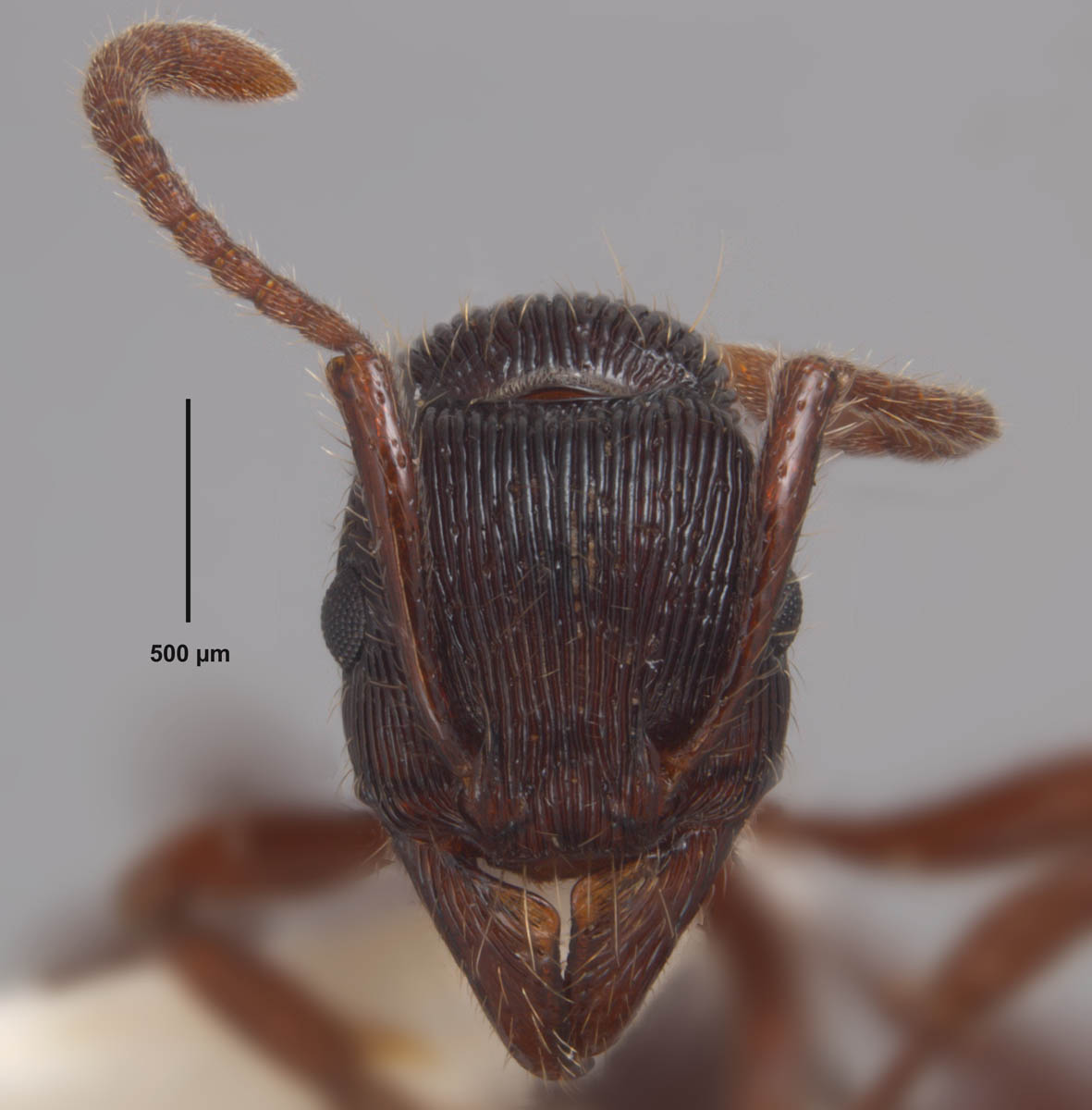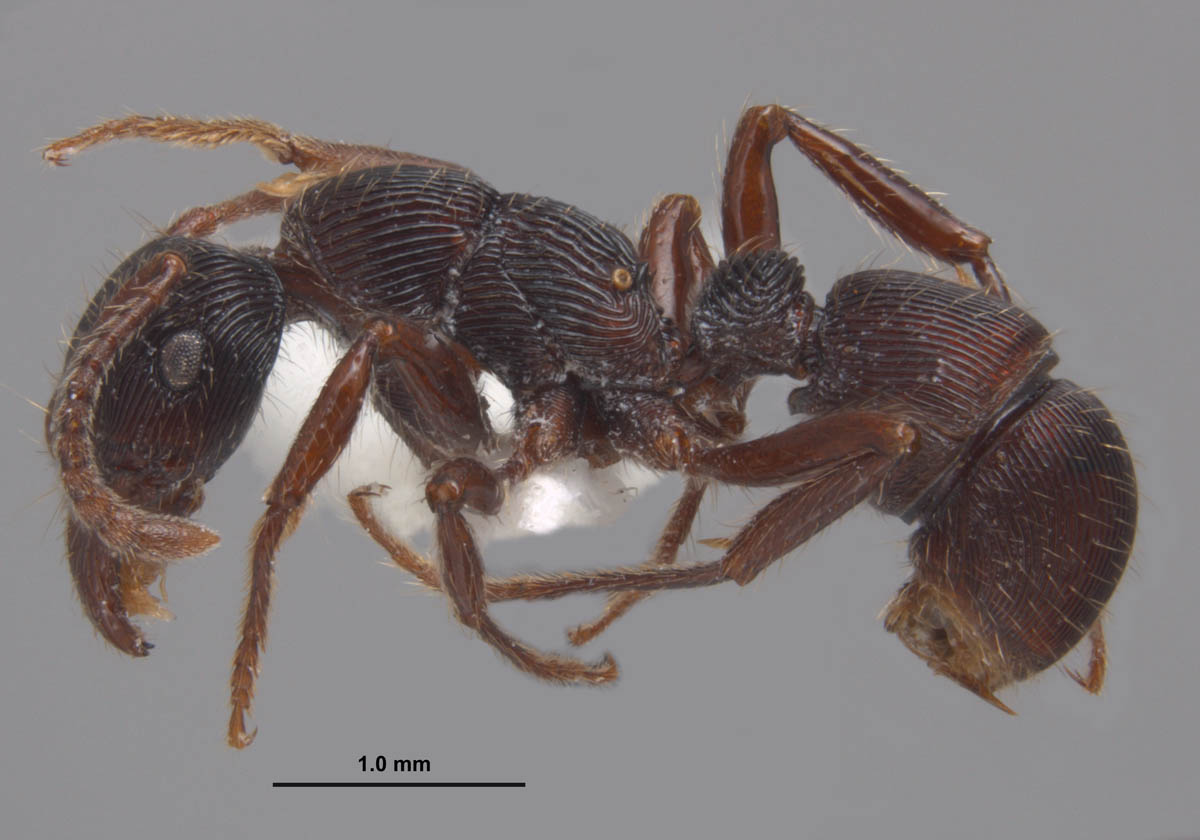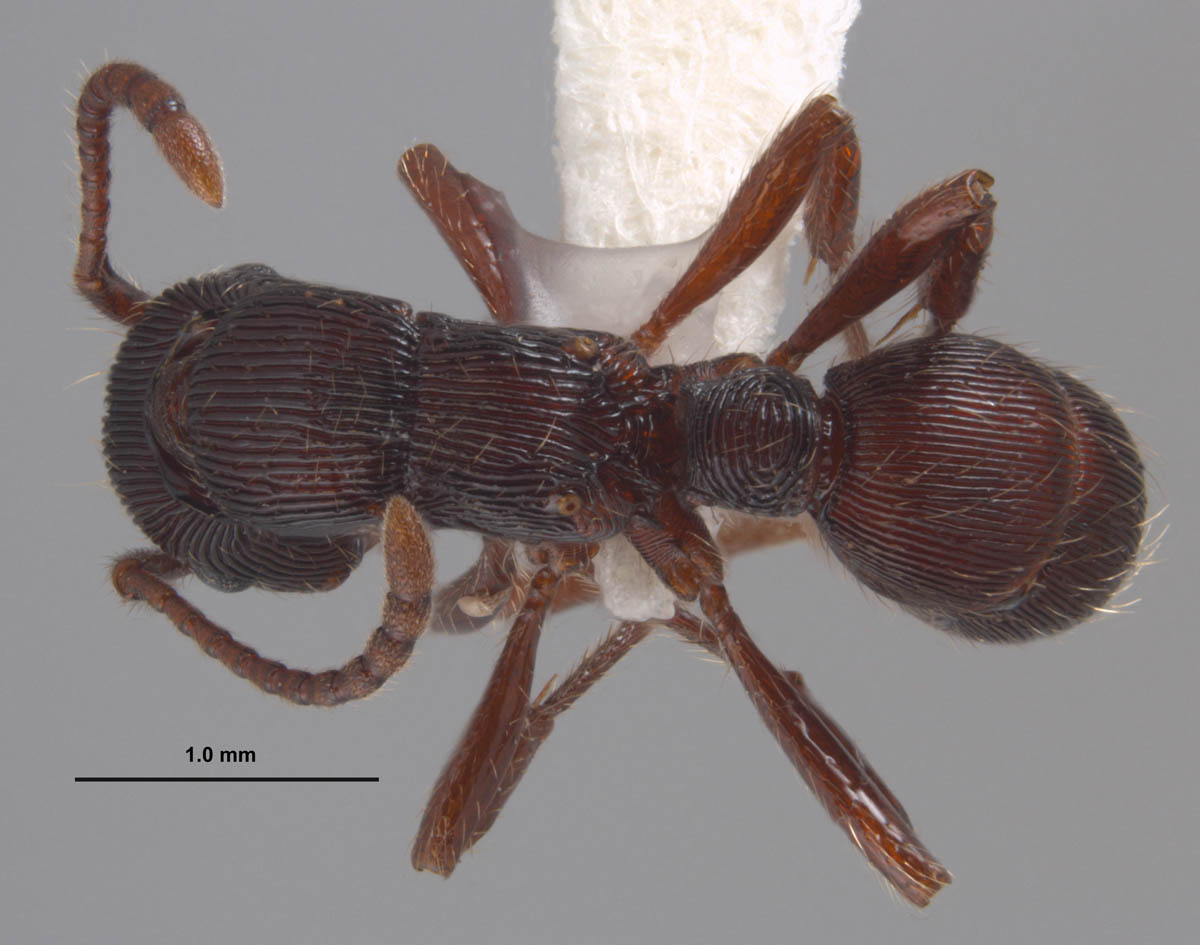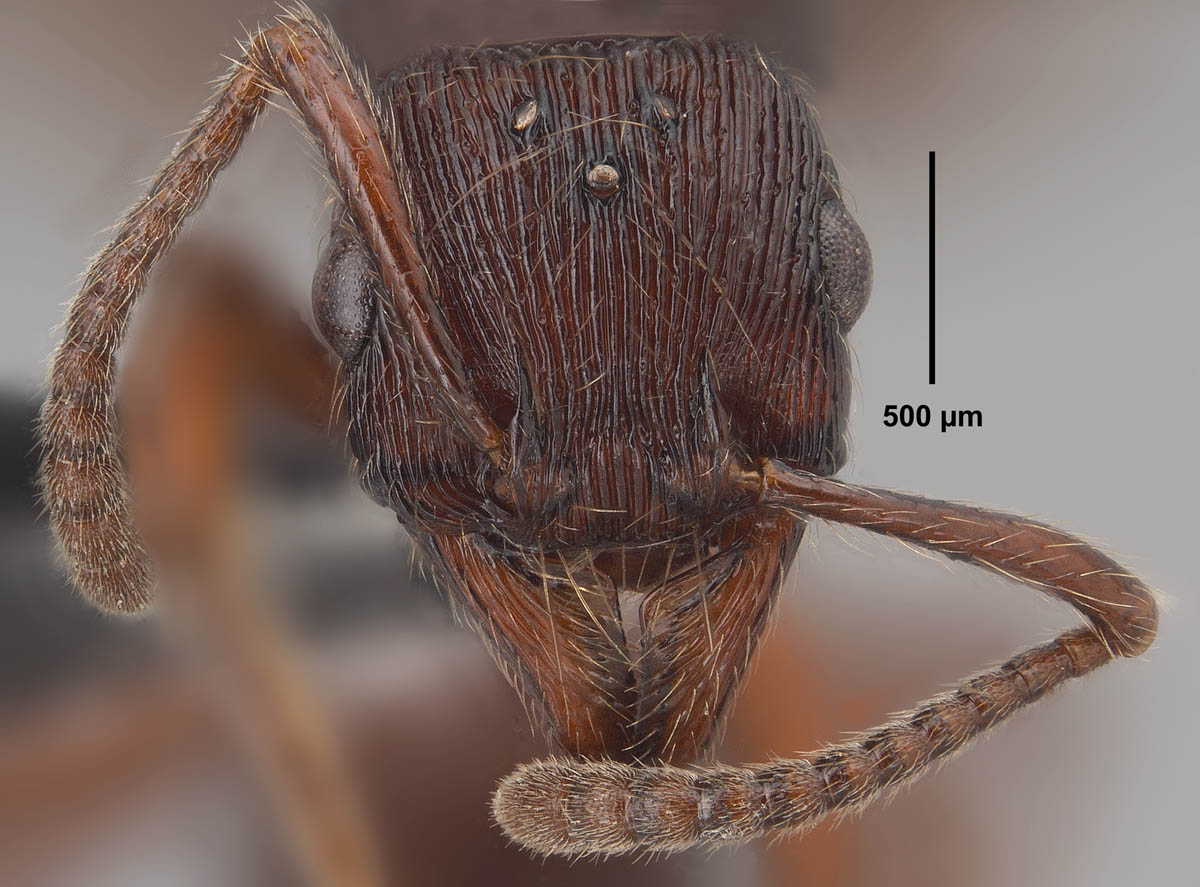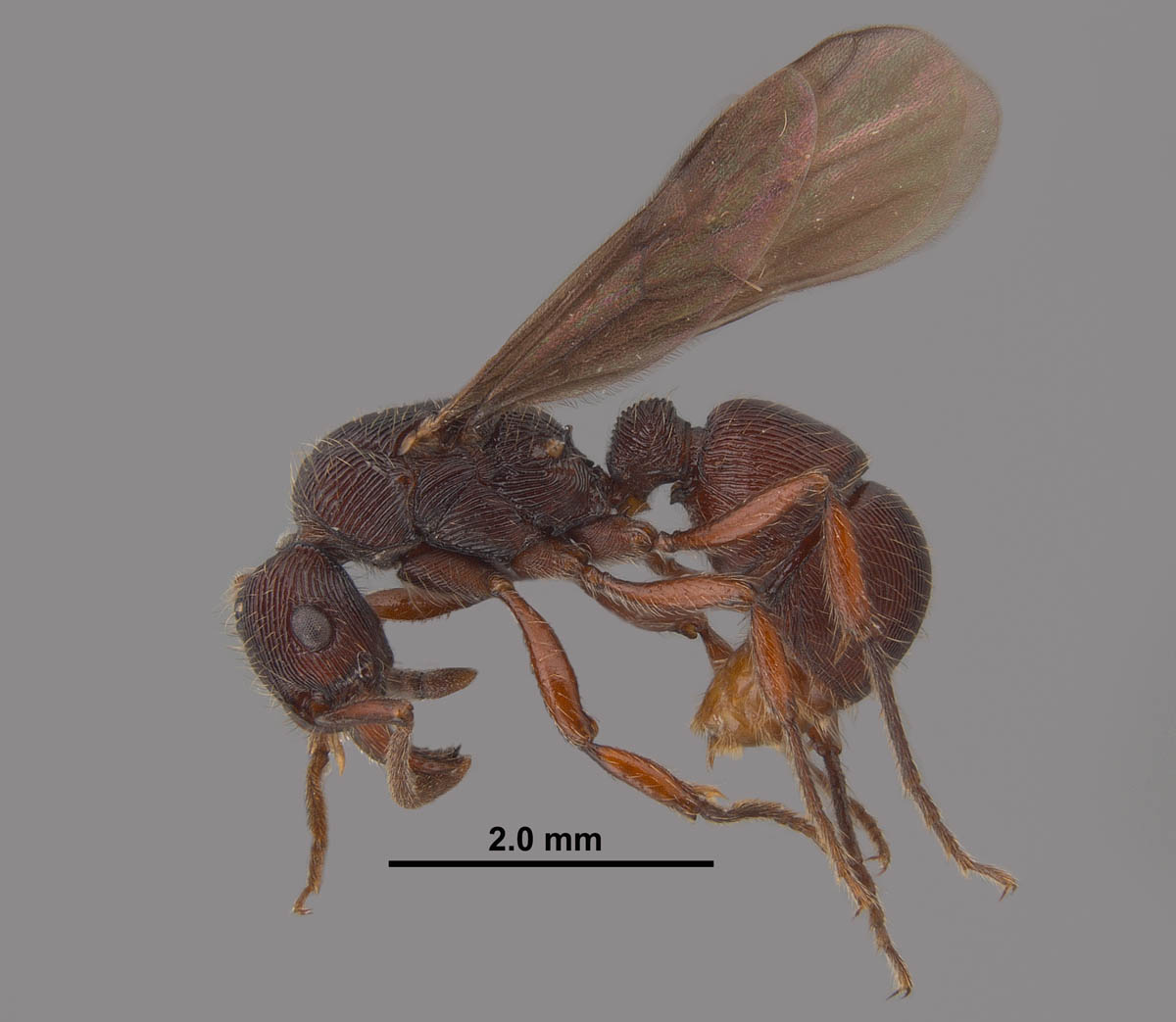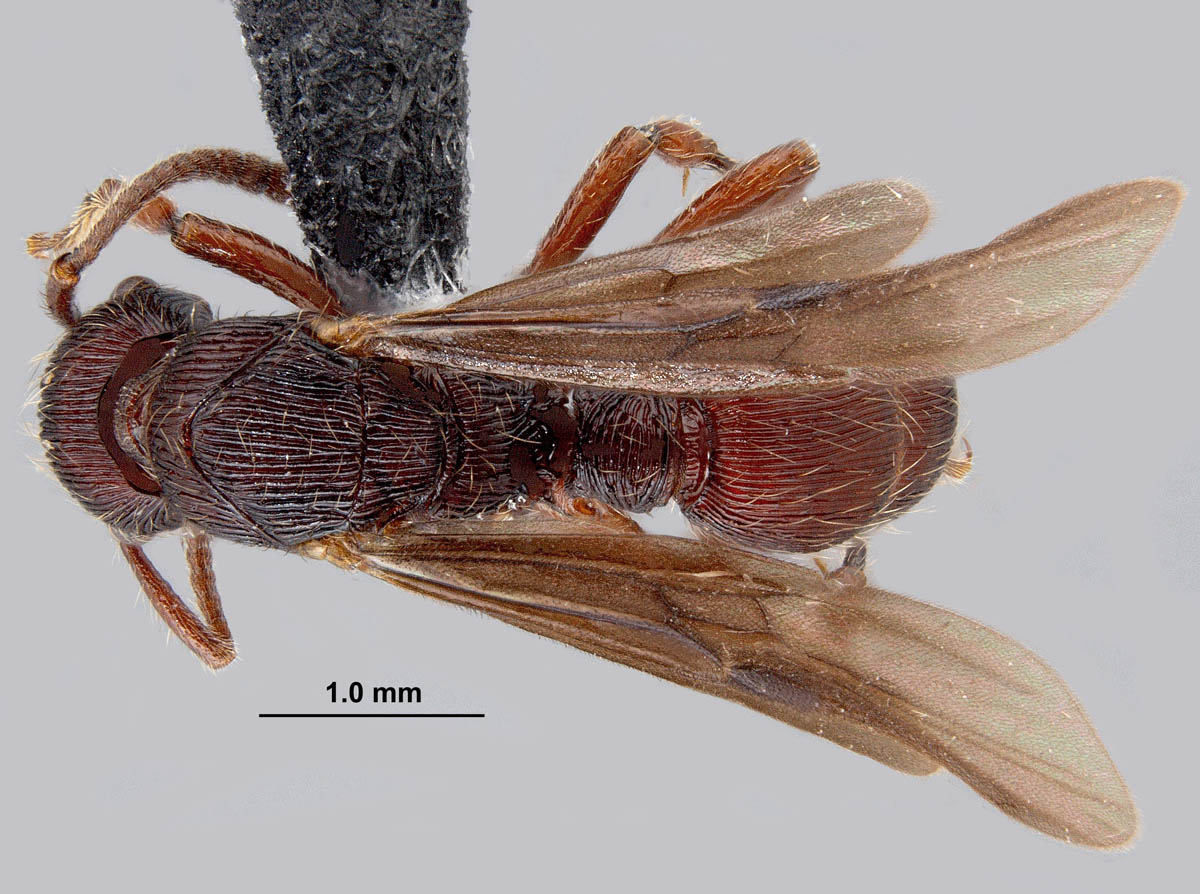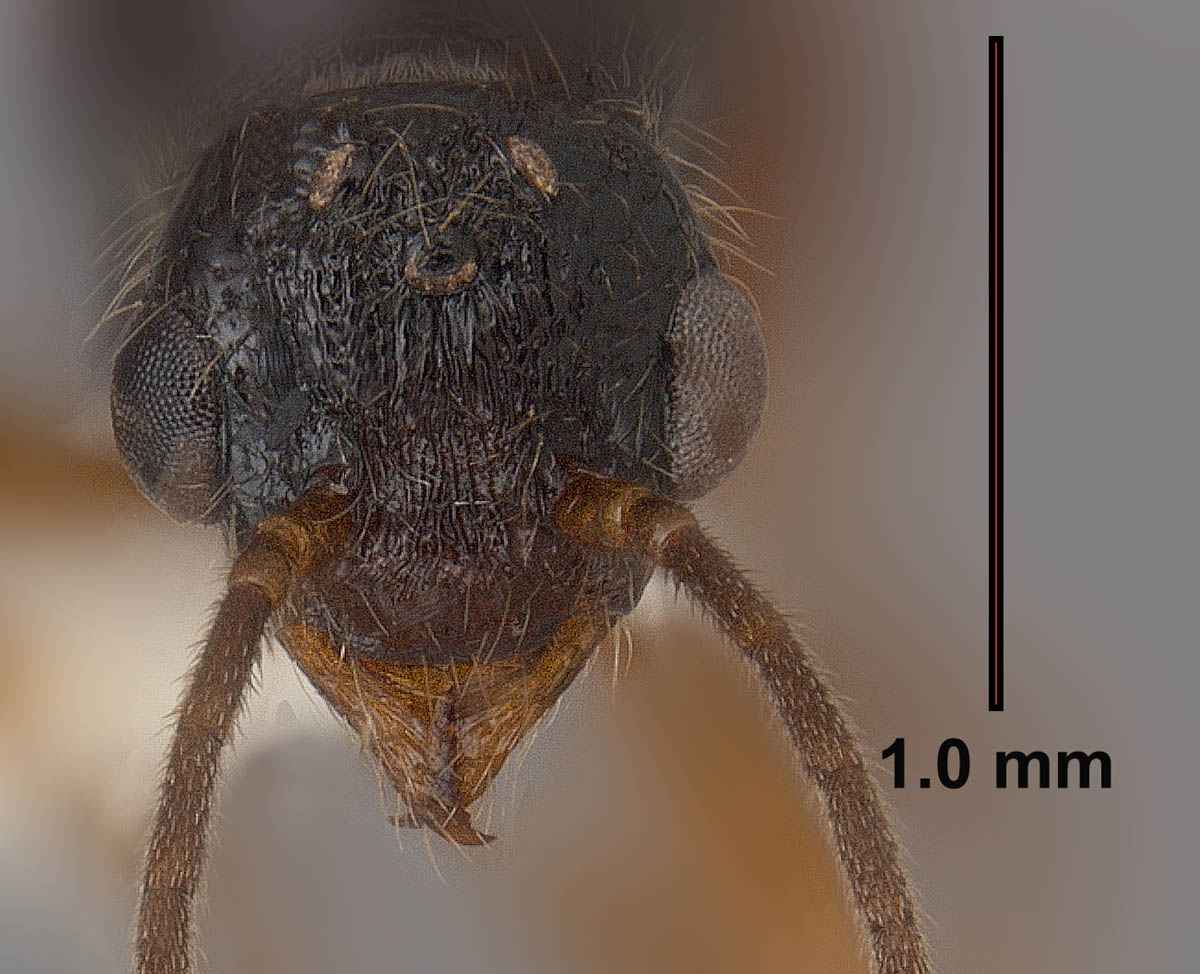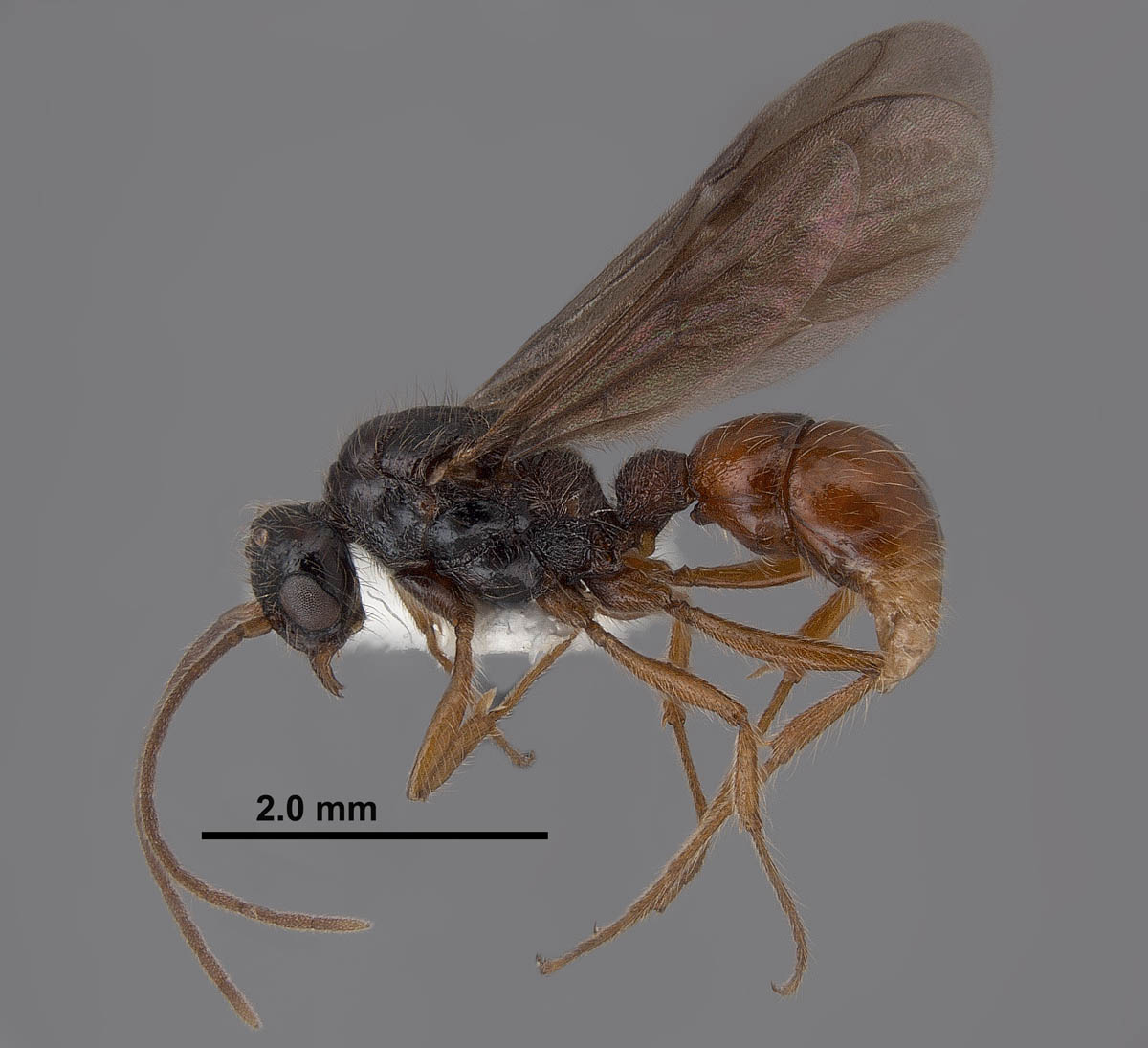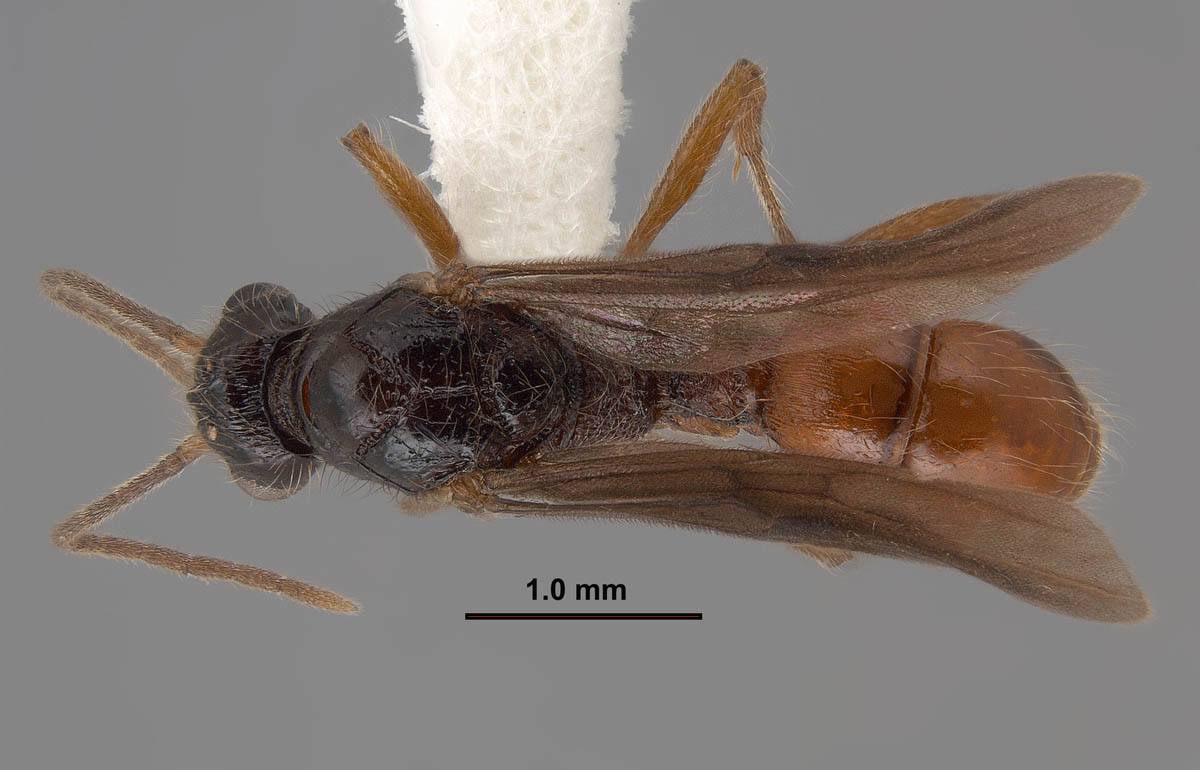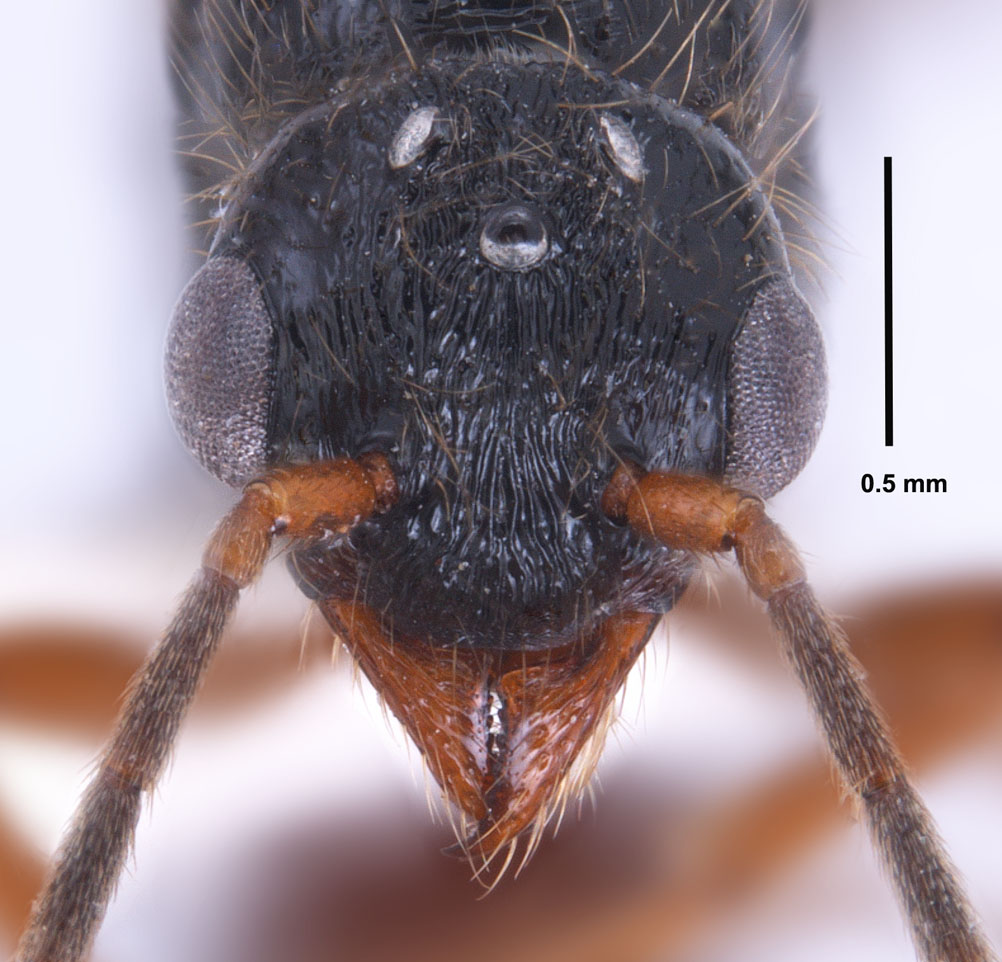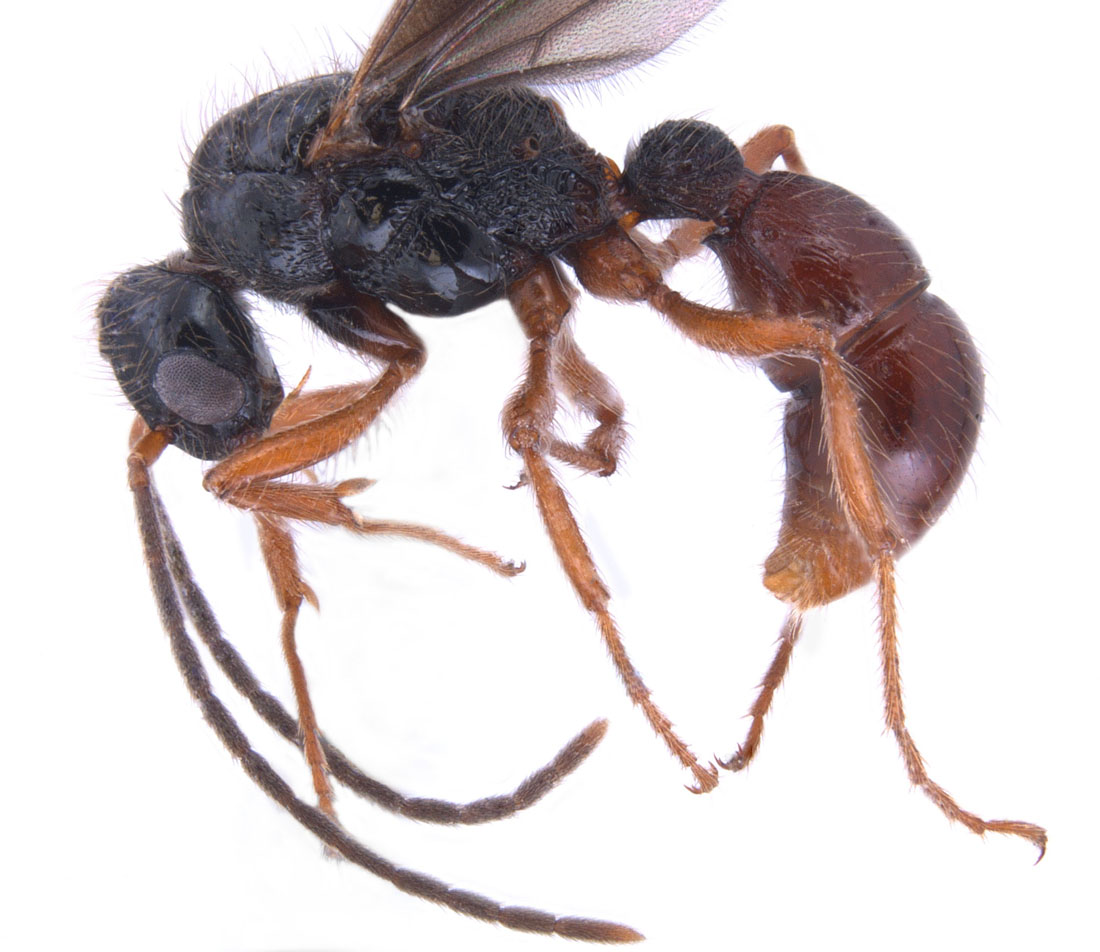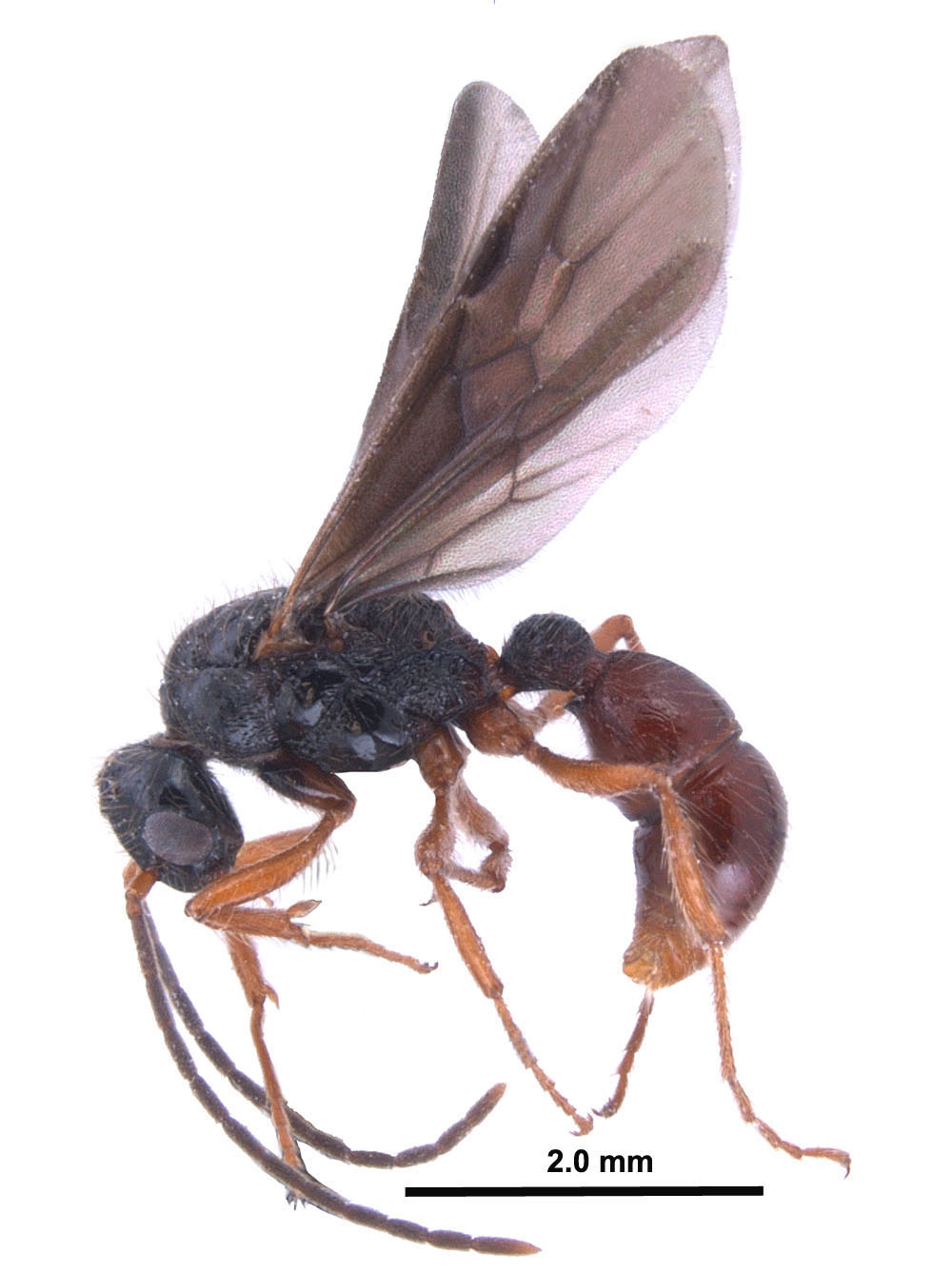Subfamily ECTATOMMINAE South American grooved ant Authors: Joe A. MacGown and Ryan J. Whitehouse |
||
Poneracantha triangularis, full face view of a worker (MS, Harrison Co.) (photo by Joe A. MacGown) |
Poneracantha triangularis, lateral view of a worker (MS, Harrison Co.) (photo by Joe A. MacGown) |
Poneracantha triangularis, dorsal view of a worker (MS, Harrison Co.) (photo by Joe A. MacGown) |
Poneracantha triangularis, full face view of a queen (MS, Pearl River Co.) (photo by Ryan Whitehouse and Joe A. MacGown) |
Poneracantha triangularis, lateral view of a queen (MS, Pearl Rive Co.) (photo by Ryan Whitehouse and Joe A. MacGown) |
Poneracantha triangularis, dorsal view of a queen (MS, Pearl Rive Co.) (photo by Ryan Whitehouse and Joe A. MacGown) |
Poneracantha triangularis, full face view of a male (MS, Pearl River Co.) (photo by Ryan Whitehouse and Joe A. MacGown) |
Poneracantha triangularis, lateral view of a male (MS, Pearl Rive Co.) (photo by Ryan Whitehouse and Joe A. MacGown) |
Poneracantha triangularis, dorsal view of a male (MS, Pearl Rive Co.) (photo by Ryan Whitehouse and Joe A. MacGown) |
Poneracantha triangularis, full face view of a male (photo by Joe A. MacGown) |
Poneracantha triangularis, lateral view of a male (photo by Joe A. MacGown) |
Poneracantha triangularis, lateral view of a male (photo by Joe A. MacGown) |
Introduction A recent publication by Camacho et al. (2022) about Ectaheteromorph ants brought aboiut a new classification for subfamilies in the group. These changes included one that affected species found in the southeastern USA: The genus Poneracantha was resurrected and what we were calling Gnamptogenys triangularis is now Poneracantha triangularis. The genus Poneracantha includes 20 species that are primarily predaceous worldwide with only P. triangularis being found in the USA. Poneracantha triangularis (Mayr) (Ectatomminae), the South American grooved ant, is an average sized, dark brown species with deep grooved sculpture on the entire body. The species was first reported in the US in in Florida was collected in 1985 (Deyrup et al. 2000), and has spread into other southeastern states. Diagnosis Identification Queen: Medium sized : TL ≈ 6.0mm, HL 1.18-1.24mm, HW 1.18-1.22mm, SL 1.06-1.13mm, EL 0.31-0.32mm, MeSL 1.86-2.01mm (n=5) (MEM specimens). Dark reddish-brown head, mesosoma, and gaster with lighter reddish brown legs and antennae. Head, mesosoma and gaster shiny, with distinct, longitudinal grooves. Head about as long as wide, squarish; with conspicuous, erect setae; eyes situated laterally at about the midpoint of the head; three ocelli present; mandibles elongate, triangular, edentate, with minute dentition; distinct frontal lobes present; antennae 12-segmented, scape barely exceeding posterior border of head. Mesosoma with erect setae; enlarged with four wings or wing scars present; metacoxal spine distinct, but not always as well developed as in the workers; propodeal spines minute. Wings grayish brown fading to clear along lower wing margins; forewing with costal, basal, subbasal, submarginal, and discal cells presesnt, pterostigma present; hindwing with costal, basal, subbasal, and one submarginal cell present. Waist with a single petiolar node, with distinct, shining ridges; anteriorly directed subpetiolar process present ventrally. Gaster with numerous erect setae; first two segments elongated to make up most of the gaster; distinct, deep suture between the first two segments; first gastral sternite with anteroventral anterior projection; sting present. Male: Medium sized, slightly smaller than workers: TL ≈ 5.0mm, HL 0.97-1.01mm, HW 0.91-0.98mm, SL 0.23-0.27mm, EL 0.42-0.46mm, MeSL 1.84-1.93mm (n=5) (MEM specimens). Head and mesosoma dark brownish black, gaster reddish-brown, legs, mandibles, antennal scapes and first funicular segment light reddish brown, and remainder of funiculus dark brown. Head about as long as wide, evenly rounded posteriorly; deep vertical rugae present except posterior corners of head, which are smooth; numerous long, erect setae; eyes large, bulging out on sides of head; three slightly protruding ocelli present; mandibles well developed, triangular, overlapping appically, inner margins with minute serrations; long apical tooth present; frontal lobes reduced to form a cup-like antennal insertion points; antennae 13-segmented, second segment about as wide as it is long, scape short. Mesosoma evenly curved dorsally, with numerous, elongate, erect setate present, especially dorsally; anterior portion of pronotum, mesoscutum, and mesopleura with reduced sculpture and shiny, remainder of mesosoma and mesopleural suture with deep oval fovea, fovea on propodeum forming tight reticulation. Wings grayish brown fading to clear along lower wing margins; forewing with costal, basal, subbasal, submarginal, and discal cells presesnt, pterostigma present; hindwing with costal, basal, subbasal, and one submarginal cell present. Waist with a single petiolar node; node is domed and subquadrate when viewed dorsally; ventrally directed subpetiolar tooth present; leading edge with two dorsally located processes. Gaster with dense, erect setae; first tergite shagreened; remainder smooth and shiny; first two segments enlarged with a distinct constriction between them; first gastral sternite with anteroventral anterior projection; parameres triangular. Biology and Economic Importance Pest Status Distribution Nearctic: United States (antwiki.org). U.S. Distribution: AL, FL, GA, and MS (Deyrup 2003, MEM). Acknowledgments Literature Cited Bolton, B. 2022. Antcat: An online catalog of the ants of the world. Available online: http://www.antweb.org/world.jsp. Accessed 23 March 2022.. Camacho, G. P.; Franco, W.; Branstetter, M. G.; Pie, M. R.; Longino, J. T.; Schultz, T. R.; Feitosa, R. M. 2022. UCE phylogenomics resolves major relationships among ectaheteromorph ants (Hymenoptera: Formicidae: Ectatomminae, Heteroponerinae): a new classification for the subfamilies and the description of a new genus. Insect Systematics and Diversity 6 (1): 5:1-20. Deyrup, M. 2003. An updated list of Florida ants (Hymenoptera: Formicidae). Florida Entomologist 86: 43-48. Deyrup, M., L. Davis, & S. Cover. 2000. Exotic ants in Florida. Transactions of the American Entomological Society 126:293-326. Lattke, J. E. 1995. Revision of the ant genus Gnamptogenys in the New World (Hymenoptera: Formicidae). Journal of Hymenoptera Research 4:137-193. Lattke, J.E., F. Fernández & G. Palacio, E.E. 2007. Identification of the species of Gnamptogenys Roger in the Americas. In: Snelling, R.R, B.L. Fisher & P.S. Ward (Eds.) Advances in ant systematics (Hymenoptera: Formicidae): homage to E.O. Wilson – 50 years of contributions. Memoirs of the American Entomological Institute vol. 80, Gainesville, FL, 690 p., pp. 254-270. MacGown, J. A. and J. K. Wetterer. 2011. Geographic Spread of Gnamptogenys triangularis (Hymenoptera: Formicidae: Ectatomminae). Psyche, vol. 2012, Article ID 571430, 4 pages. |
||


